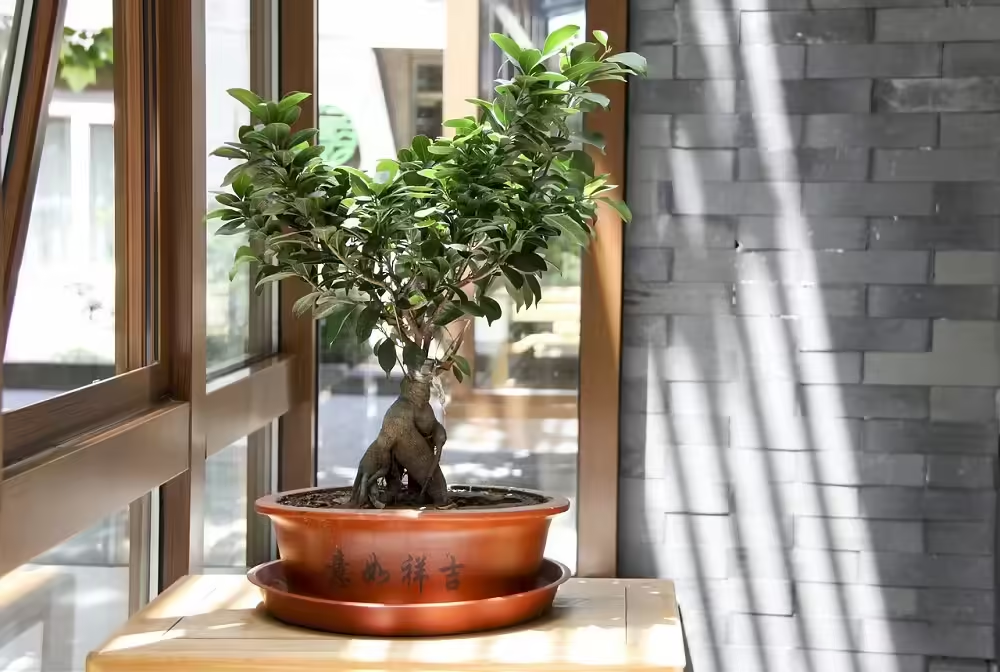When you think of a calming, nature-inspired home, Asian indoor plants might just be what you need to achieve that serene atmosphere.
Whether you’re aiming to enhance your feng shui or add a splash of greenery, these plants not only improve aesthetics but connect you to centuries-old traditions rooted in Eastern cultures.
From the Japanese bonsai to the majestic Chinese Fan Palm, indoor Asian plants have long been a symbol of tranquility and balance. Their adaptability and ease of care make them ideal for any home looking to embrace nature indoors.
In this post, we’ll explore how Asian plants indoor are much more than just greenery—they are cultural icons that bring history and beauty to your living space.
Houseplants and Indoor Gardens: A Culture Rooted in Asia
Asia is home to some of the world’s most diverse plant life, where gardening has been intertwined with culture for thousands of years. Whether through sacred symbols or carefully cultivated art forms, plants are deeply woven into the region’s history.
For example, the lotus flower, which thrives in parts of Asia like India and China, has long been a symbol of purity, beauty, and enlightenment. It has adorned temples and been a spiritual emblem for countless empires.
Japan, known for its meticulous attention to natural beauty, boasts the tsubo-niwa, a tiny garden often nestled within homes, adding a tranquil connection to nature. This garden style allows homeowners to experience the beauty of nature indoors.
In China, the ancient art of feng shui, practiced for over 6,000 years, emphasizes indoor plants as an essential component of harmony in the home.
Perhaps one of the most globally recognized forms of plant art is the bonsai, often associated with Japan. However, its origins trace back to China’s Han Dynasty around 210 BC. Bonsai exemplifies a meditative practice that merges nature, art, and care.
Through centuries of exploration, many of these plant species made their way to Europe and the rest of the world. Today, indoor Asian plants serve as reminders of the beauty and tranquility they bring to homes worldwide.
List of Popular Asian Indoor Plants
Below is a list of popular Asian indoor plants that have become beloved additions to homes around the world. Each offers a unique aesthetic and personality while providing easy-to-care-for greenery in any space.
1. Rubber Plant
Origin: Southeast Asia
Description: Known for its large, glossy leaves, this plant can grow into a stunning tree in the right conditions.
Needs: Prefers bright, indirect light. Water when the top inch of soil is dry. Well-draining soil is a must.
2. Golden Pothos
Origin: Southeast Asia
Description: A hardy, trailing vine with heart-shaped leaves, Golden Pothos is one of the easiest houseplants to care for.
Needs: Low light to bright indirect light, occasional watering, and tolerance for low humidity.
3. Chinese Evergreen
Origin: Southeast Asia
Description: With its vibrant, variegated leaves, this plant is both decorative and low-maintenance.
Needs: Thrives in low to medium light and requires moderate watering. It enjoys humidity but can adapt to dry air.
4. Pilea (Chinese Money Plant)
Origin: Southern China
Description: This plant is known for its coin-shaped leaves, often associated with good fortune and wealth.
Needs: Prefers bright, indirect light and moderate watering when the soil starts to dry out.
5. Staghorn Fern
Origin: Southeast Asia, Africa, Australia
Description: With its unique, antler-like fronds, the Staghorn Fern is a striking plant often grown mounted on walls.
Needs: Bright, indirect light. Requires misting to maintain humidity and watering once a week.
6. Chinese Fan Palm
Origin: Southeast Asia
Description: This palm features dramatic, fan-shaped fronds and brings a tropical vibe to any space.
Needs: Prefers bright light and moist, well-draining soil. Likes moderate humidity.
7. Hoya (Wax Plant)
Origin: Southeast Asia
Description: A trailing plant with thick, waxy leaves and fragrant star-shaped flowers.
Needs: Thrives in bright, indirect light and requires watering when the soil dries out.
8. Lady Palm
Origin: China
Description: A graceful palm with delicate, fan-shaped leaves, perfect for indoor spaces.
Needs: Prefers low to medium light and evenly moist soil. Tolerates low humidity.
9. Ginseng Ficus Bonsai Tree
Origin: Southeast Asia
Description: This bonsai features thick, twisting roots and small, glossy leaves.
Needs: Bright, indirect light and watering when the top layer of soil dries out. Enjoys higher humidity.
10. Japanese Sago Palm
Origin: Southern Japan
Description: A slow-growing palm with stiff, dark green leaves that radiate in a crown shape.
Needs: Bright light and well-draining soil. Water sparingly and allow the soil to dry out between waterings.
11. Lipstick Plant
Origin: Southeast Asia
Description: Known for its tubular, bright red flowers, this plant brings a pop of color indoors.
Needs: Prefers bright, indirect light and moist soil. Needs moderate humidity to thrive.
12. Ficus Benjamin
Origin: Southeast Asia
Description: A classic indoor tree with drooping branches and glossy leaves, perfect for adding height and greenery to your space.
Needs: Prefers bright, indirect light and regular watering. Thrives in warm, humid conditions but can tolerate drier air.
Final Thoughts
Whether you’re adding a rubber plant to a modern apartment or creating a mini bonsai garden, Asian indoor plants offer endless possibilities for enhancing your home.
These plants are more than just decorative pieces; they reflect ancient gardening traditions that continue to thrive today.
With minimal care and the ability to thrive in various environments, indoor Asian plants make the perfect companions for any plant lover.
So, why not start your journey into the world of Asian plants indoor and create your own corner of Eastern-inspired tranquility?

